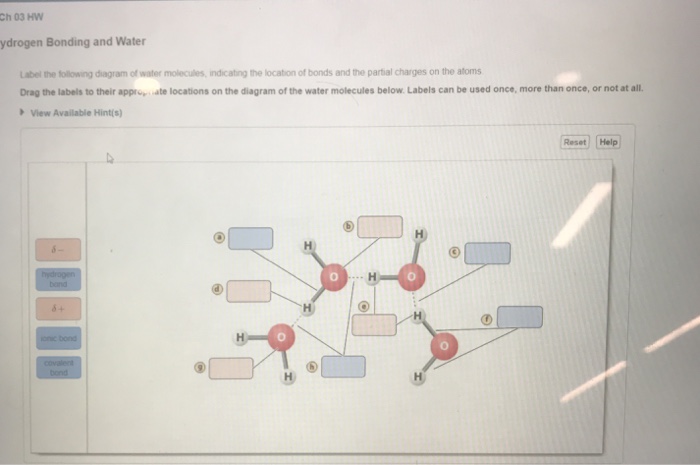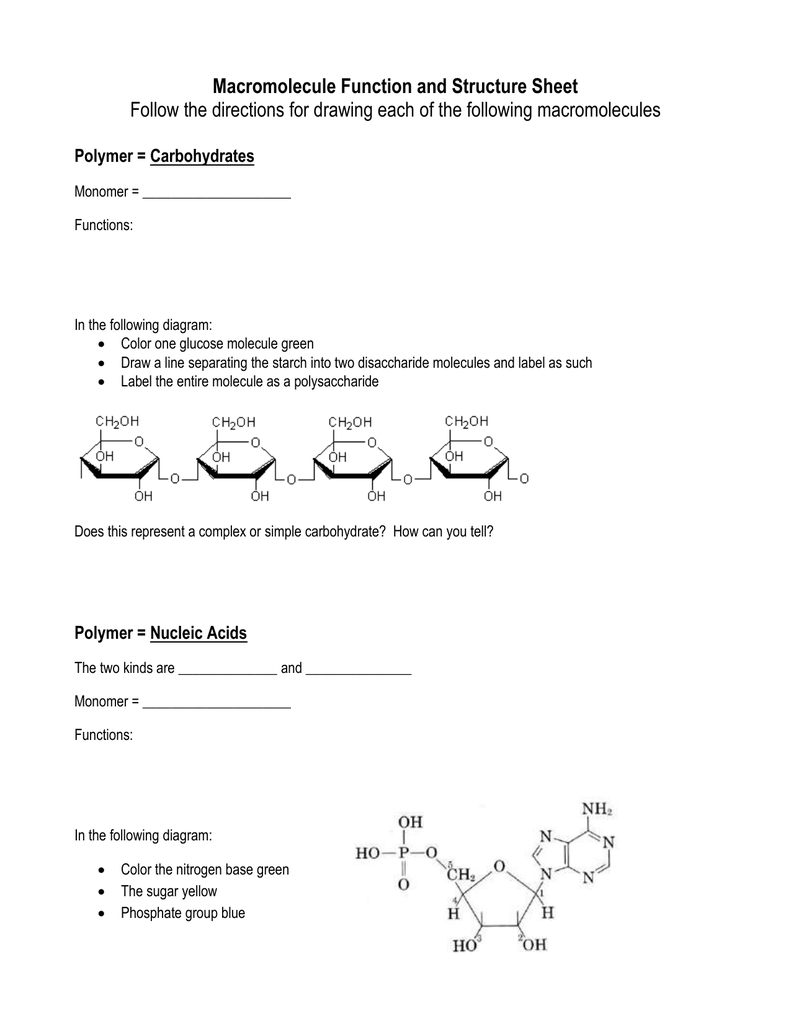36 label the following diagram of water molecules
Draw A Well Labeled Diagram Of A Plant Cell Mention The Important Features Of The Plant Cells That Play Role In Phot Cell Diagram Plant Cell Diagram Plant Cell. Chloroplast Function Location Diagram Britannica Photosynthesis Structure And Function Plant Cell. 2 3 Eukaryotic Cells Bioninja Plant Cell Diagram Cell Diagram Animal Cell. A mass of 3 kg of a saturated liquid-vapor of water is contained in a piston- cylinder device at 160 kPa. Initially, 1 kg of the water is in the liquid phase and the rest is in the vapor phase. Heat i
Prokaryotic Cell Structure. All prokaryotic cell shares four common components:-1. Plasma membrane- It refers to the outer membrane which separates the inner environment from the external environment.It is a thin lipid bilayer. It is selectively permeable.
Label the following diagram of water molecules
The coefficients of a balanced equation can be understood to represent either relative numbers of molecules or moles. ... temperature of the water increased from 22.75 C to 28.88 C.How much heat, in joules, What do telomeres on the ends of chromosomes protect against; ANALYZING DATA. In the following diagram of DNA replication, label the 3 and ... On the following diagram, label the regions of the electromagnetic spectrum that promote the following phenomena: Exercise • Ionizations (electrons are removed) • Electron transitions (absorption and emission) • Molecular rotation • Bond vibration 10.35 Label on the diagram the partially permeable membr … ane. 2 Explain what we mean by a partially permeable membrane. 3 How many small molecules are on: a the left-hand side? b the right-hand side? 4 Where is the concentration of small molecules the highest? 5 Explain why the large molecules do not move through the partially permeable membrane ...
Label the following diagram of water molecules. The cell is the structural and functional unit of the living being. Plant and animal cells are called Eukaryotic because the true nucleus is present. A typical cell has three main parts - cell boundaries and protoplasm. The main function of cell boundaries is to protect the cell and allow movement across. The protoplasm is made up of a ... Figure \(\PageIndex{2}\) shows the phase diagram of water and illustrates that the triple point of water occurs at 0.01°C and 0.00604 atm (4.59 mmHg). Far more reproducible than the melting point of ice, which depends on the amount of dissolved air and the atmospheric pressure, the triple point (273.16 K) is used to define the absolute (Kelvin ... Conduction of water and minerals from the root to the other parts of the plant. ... Given below is a diagram representing a stage during mitotic cell division. Answer the questions that follow: (a) Identify the stage ... Label the parts marked A, B & C. A. 1. Granum 2. Stroma 3. Fret 4. Thylakoid. B. 1. Granum 2. Stroma 3. Fret 4. The origin of Earth's water and volatile budget is a topic of considerable debate in planetary science 1,2,3,4,5,6,7,8,9,10.Most current dynamical models of Earth's formation assume that the ...
Even though carbon dioxide molecules are heavier than water molecules, the fact that carbon dioxide is a gas at room temperature and water is a liquid stems from differences in polarity. Lesson ... What is Osmosis? By definition, osmosis is the movement of any solvent through a selectively permeable membrane into an area of higher solute concentration, the result of which will be an equalizing of solute concentration on either side of the membrane.. This equilibrium is important for the efficient and optimized function of cells; as mentioned before, balance is the preferred state in a ... Acid rain results when sulfur dioxide (SO 2) and nitrogen oxides (NO X) are emitted into the atmosphere and transported by wind and air currents.The SO 2 and NO X react with water, oxygen and other chemicals to form sulfuric and nitric acids. These then mix with water and other materials before falling to the ground. While a small portion of the SO 2 and NO X that cause acid rain is from ... Photosynthesis is a process used by plants and other organisms to convert light energy into chemical energy that, through cellular respiration, can later be released to fuel the organism's activities.This chemical energy is stored in carbohydrate molecules, such as sugars and starches, which are synthesized from carbon dioxide and water - hence the name photosynthesis, from the Greek phōs ...
Jan 07, 2015 · 8 In digestion large food molecules are broken down into small food molecules by enzymes. (a) Use this information to complete the table. (5) Large food molecule Enzyme involved in digestion Small food molecule produced starch amylase protease lipid (b) The small food molecules can be absorbed into the blood by villi in the small intestine. SIDEWAYS and allow water and other NON-POLAR molecules to pass through into or out of the cell. This is known as simple PASSIVE TRANSPORT because it does not require ENERGY and the water or molecules are moving WITH the concentration gradient. SKETCH AND LABEL a phospholipid coloring the heads red and the tails blue. How many molecules of glucose are produced during photosynthesis? In words, this means that six molecules of carbon dioxide (CO2) combine with six molecules of water (H2O) in the presence of light energy. This produces one molecule of glucose (C6H12O6) and six molecules of oxygen (O2). heart outlined. WATER. When molecules are exposed to frost, they become so slow that they begin to attach to one another, resulting in water hardening into a solid crystal. Unlike many other liquids, water expands in the hard state and becomes denser than it is in the liquid state.
Part A: A Forest Carbon Cycle. In Lab 1, you learned about the molecular nature of carbon compounds and the carbon cycle, and its relationship to other biogeochemical cycles such as the nitrogen cycle. In this Lab section, you will learn how carbon compounds move throughout a terrestrial and aquatic food webs. Then, you will take on the role of ...
1 answer. Choose the correct answers A problem the first cells most likely faced was dealing with osmotic stress, i.e., the movement of water through cell membranes. If water rushes into the cell, the concentra. 1 answer. Fruit flies (Drosophila melanogaster) have n = 4 non-homologous chromosomes.
Labels: comb sorter diagram, comb sorter experiment, dispersion fiber percentage, effective length, short fiber percentage, testing, way to find mean length REGAIN & MOISTURE CONTENT Regain is defined as the weight of water in a material expressed as a percentage of the oven dry weight.
Structure of water molecule is made up of one molecule of oxygen and two molecules of hydrogen bonded covalently. Water (H 2 O) essentially considered one of the most important substances found on the earth. It covers over 70% of the earth's surface and makes up as much as 95% of the living organisms. It is virtually unique among liquids ...
The molecular mass of the SCl2 compound is 102.97 g·mol−1, calculated as below. Mol mass of SCl2 = 1 * 32 (Mol mass of S) + 2 * 35.4 (Mol mass of Cl) = 102.97 g·mol−1. If we talk about the chemical composition of the Sulfur dichloride, the molecule consists of 2 atoms of chlorine and 1 sulfur atom. Sulfur is the central atom surrounded by ...
Here, six molecules of carbon dioxide (CO2) combine with 12 molecules of water (H2O) using light energy. The end result is the formation of a single carbohydrate molecule (C6H12O6, or glucose ...
The diagram showing orbital overlapping in the ammonia (NH3) molecule. The orbitals of NH3 participating in the bond formation to undergo sp3 hybridization . Molecular orbital diagram of ammonia (NH3) molecule. The molecular orbital diagram is a diagrammatic representation of how chemical bonding is taking place within the molecules.
\[E = h \nu \label{5.3.1}\] where \(h\) is Planck constant and \(\nu\) is th e frequency (Hz) of the radiation. UPS is a powerful technique to exam molecular electron structure since we are interested in the molecular orbitals from polyatomic molecules (especially the valence orbitals) and is the topic of this Module.
The gelatin molecules form a chain because the positive end of each molecule is attracted to the negative end of another molecule. (However, it may also occur because the gelatin molecules are hydrated, meaning that each gelatin is attached to a water molecule. If this is the case, the positive ends of hydrated molecules form a chain.)
The carbon cycle is the biogeochemical cycle by which carbon is exchanged among the biosphere, pedosphere, geosphere, hydrosphere, and atmosphere of the Earth.Carbon is the main component of biological compounds as well as a major component of many minerals such as limestone.Along with the nitrogen cycle and the water cycle, the carbon cycle comprises a sequence of events that are key to make ...
Dalam Bahasa Inggris terdapat beberapa jenis text, yaitu Narrative, Report, Descriptive, Procedure Dan yang lainnya.Dari jenis yang sudah disebutkan salah satunya adalah Descriptive Text. Pada Kesemptan kali ini IBI kan membahas tentang pengertian, ciri, struktur, tujuan dan contoh dari Descriptive Text, mari kita simak.
Let's use this software application to construct some molecules. By doing this, we'll be able to identify similarities and differences between the types of molecular models available. (Ask a student to point and drag the atoms at the bottom of the screen to model water, oxygen, hydrogen, carbon dioxide and nitrogen molecules.
Unit 1 Summative assessment occurs via the following: Written answers to the summarizing questions: Q1. Imagine that you are a water molecule on a journey through the hydrologic cycle. Identify the process that is occurring at each circled number on the diagram. Q2.
Label on the diagram the partially permeable membr … ane. 2 Explain what we mean by a partially permeable membrane. 3 How many small molecules are on: a the left-hand side? b the right-hand side? 4 Where is the concentration of small molecules the highest? 5 Explain why the large molecules do not move through the partially permeable membrane ...
On the following diagram, label the regions of the electromagnetic spectrum that promote the following phenomena: Exercise • Ionizations (electrons are removed) • Electron transitions (absorption and emission) • Molecular rotation • Bond vibration 10.35
The coefficients of a balanced equation can be understood to represent either relative numbers of molecules or moles. ... temperature of the water increased from 22.75 C to 28.88 C.How much heat, in joules, What do telomeres on the ends of chromosomes protect against; ANALYZING DATA. In the following diagram of DNA replication, label the 3 and ...






























0 Response to "36 label the following diagram of water molecules"
Post a Comment